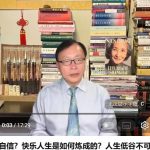February 4, 2018
“Rather, reform has been used as a kind of calibrating tool for the system to retain complete control in the political, economic, social, and cultural spheres.”
In 1981, Polish president Wojciech Jaruzelski ordered a crackdown on the growing Solidarity movement. Eight years later, under pressure of internal unrest as well as a cultural thaw in the Soviet Union, the Polish Communist government and Solidarity held roundtable talks. On June 4, 1989, free parliamentary elections were held in Poland and the Communists suffered a crushing defeat. Jaruzelski resigned in 1990 and Solidarity leader Lech Wałęsa took his place as president. Poland marked its transition to democracy without shedding a drop of blood.
Poland’s case is unique among the political transitions in the collapse of the Soviet and Eastern European communist bloc. Unlike the Soviet Union, where reform was led primarily by Communist Party bureaucrats and went through a chaotic implementation, or Czechoslovakia, where change came through the sudden mass demonstrations of the Velvet Revolution, Polish democracy emerged as a product of the state coming to an agreement with society.
In the view of political scientist Juan José Linz, this phenomenon has to do with Poland’s unique political and social structure. Unlike other Eastern European countries, Poland was not a totalitarian system even though it was also a communist country.
After World War II, Poland did not experience agricultural collectivization. Land remained privately owned and private economy had had a significant percentage in agriculture — a strong contrast with events in other Soviet satellite states.
In addition, the traditional influence of the Catholic Church in Poland remained intact through decades of Communist government. In 1978, Karol Józef Wojtyła from the Krakow parish was selected to become Pope John Paul II of the Roman Catholic Church. As the history’s first Polish pope, his nationality played a major role in shaping the social movement in his homeland. Each of Pope John Paul II’s returns to Poland to celebrate Mass was tantamount to a large-scale social mobilization and at the same time a demonstration of the power of civil society.
A few years ago, my friends Jia Jia (贾葭), Murong Xuecun (慕容雪村) and Michael Anti (安替) met with former Polish President Wałęsa and inquired about his country’s experiences in the transition to democracy. To their surprise, Wałęsa stated bluntly, “My friends, the Polish transition can’t be a model for China. We were blessed to have a Polish Pope.” At a loss for words, Anti replied: “God bless Poland!”
The fact that Poland was not a totalitarian state left room for the growth of civil society. Because of it, organizations like Solidarity could arise in Poland and garner widespread support against the Communist regime.
Following China’s market reforms, Chinese citizens gained more personal, economic, social, and cultural autonomy. Mainland Chinese society seemed to have departed from the familiar dictatorial style, giving many hope that civil society would appear in China and form a local version of the Solidarity movement that would bring peaceful democratic change.
Until a few years ago, this prospect didn’t seem too far-fetched. Limited marketization did bring a handful factors favorable to the growth of civil society, such as the emergence of new social classes, market-oriented media outlets, the establishment of judicial institutions that have the appearance of rule of law, and the growing space for expression on internet. These developments resulted in the spread of the ideas of universal freedom and civil rights, the rise of rights defense activities, and the willingness of participation of the the emerging social classes. People were encouraged by these phenomenon and began to harbor an optimistic picture that the growth of civil society would be tolerated by the regime, that a healthy interaction would develop between the government and the civil society, and that China could thus transition toward democracy.
This optimistic vision was quickly shattered.
After some initial observation, the authorities tightened control over all of these rising social fields: the media and internet were brought under ever-stricter control; human rights defenders and NGOs also faced mounting pressure. Furthermore, the government has been strengthening its grip on the new social classes by establishing party cells in what it calls “the new economic organizations and the new social organizations.”
Some might think these measures are only a product of Chinese leaders’ regimented political mindset, and their optimistic vision is still viable as long as the leaders of the regime change their way of thinking.
But upon closer examination of contemporary China’s political and social structure, you will see that the problem lies not in the mindset of the leadership, but is deeply built into the system.
China’s reform toward marketization has also been called a marginal revolution. This revolution developed as agrarian land was contracted to households, individuals were allowed to create their own businesses, enterprises cropped up in towns and villages, and special economic zones were established in coastal cities. The authorities adjusted accordingly, fuelling the hope that such reforms would eventually make inroads to systemic change, or the most difficult “deep water of reform.”
But in practice, little change has been effected on the system. On the contrary, the reforms on the margins have been adapted to reinforce the system. Specifically, the Party, government, and military saw little substantial change; the Party retained control over the core economic departments, strengthening itself through financial avenues — a phenomenon reflected in the fact that the government has grown more in power and resources while the masses have been regressing. In terms of society and culture, the regime’s monopoly has remained strong but at the same time it has introduced some market elements to strengthen itself.
Thus, the economic progress achieved during the marginal reforms reinforced the regime’s financial capacity and allowed it to double down on its control over society. Contrary to what the optimists had envisioned, market reforms have not touched the root of the political system. Rather, reform has been used as a kind of calibrating tool for the system to retain complete control in the political, economic, social, and cultural spheres.
With the system still firmly in control, factors that optimists believed would herald social change never got off the ground, and the gains civil society made were lost. For example, reacting to the demands of the the new social class, market-oriented media outlets developed a liberal trend for a limited period, but because the industry is subject to Party monopoly, they have ultimately bent to the will of the political system. Faced with combined political and economic pressure, the fate of the internet was similar.
The limited market reform in mainland China didn’t relax the political system’s need for absolute control. It’s more apt to see China as a neo-totalitarian regime with characteristics of a market economy — it can by no means be called merely “authoritarian,” as some do. The neo-totalitarianism does afford the Chinese masses a certain degree of personal, economic, and cultural freedom as well as some social space. Yet that social space is tightly controlled by the state and given little potential for free growth.
In the face of the neo-totalitarian regime’s total control and persistent suppression, the prospect that a civil society born of social movements will usher in progressive political transformation seems increasingly distant and elusive. But history continues. In the 1980s, Poland’s non-totalitarian nature permitted democratic transition through state-society negotiation. Other Communist countries made the transition all the same, whether through peaceful mass demonstrations or violent regime change.
No matter the methods, when a totalitarian regime imposes absolute control over society and robs the people of their rights, it does so against popular support. Social progress may be hindered, but the people will continue to resist the system from within. When the window of opportunity presents itself, history will bring change — at once unpredictable yet in hindsight inevitable.

Mo Zhixu (莫之许), pen name of Zhao Hui (赵晖), is a Chinese dissident intellectual and a frequent contributor of Chinese-language publications known for his incisive views of Chinese politics and opposition. He is the co-author of “China at the Tipping Point? Authoritarianism and Contestation” in the January, 2013, issue of Journal of Democracy. He currently lives in Guangzhou.











